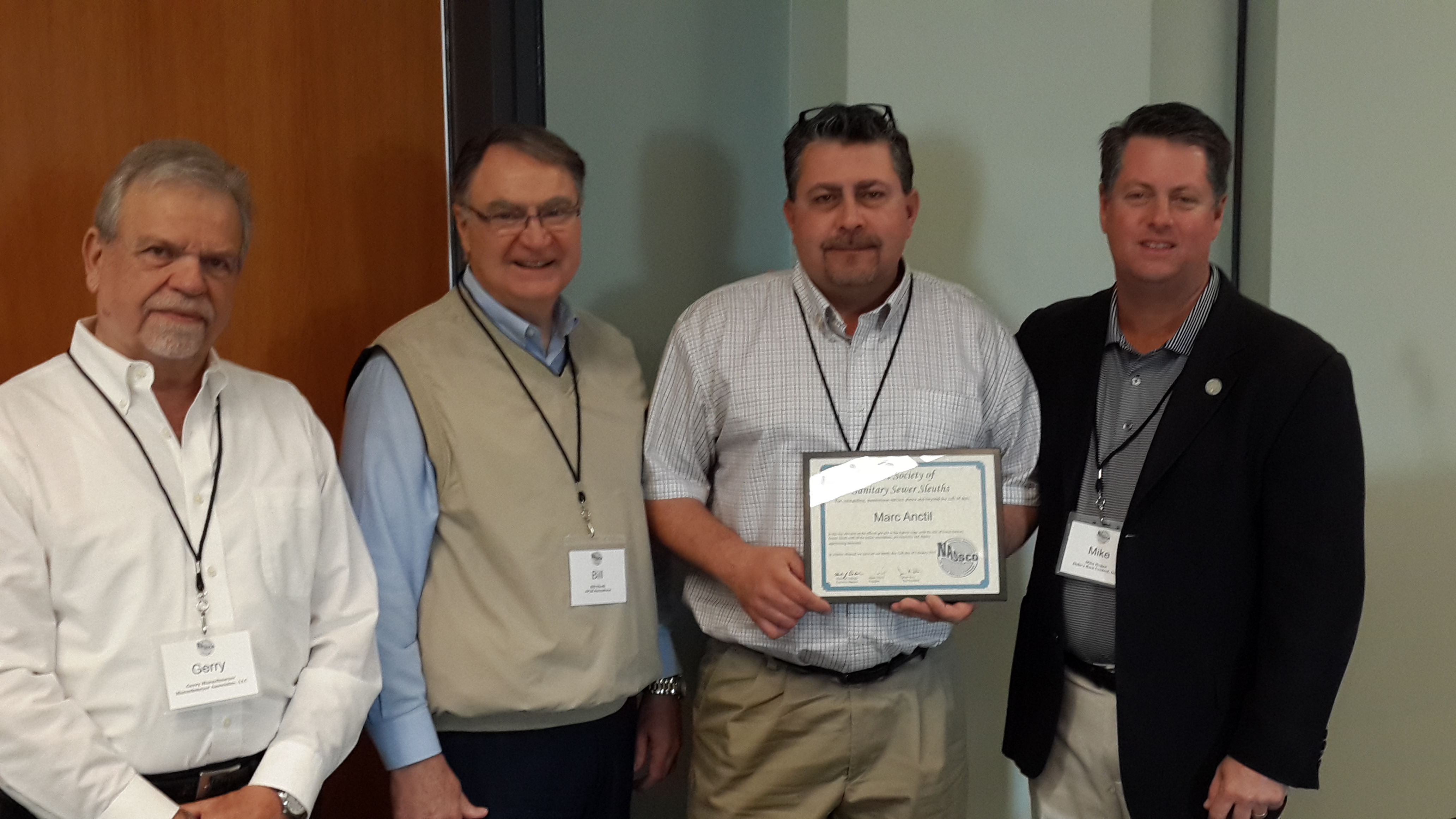May 2015, Vol. 70, No.5
Features
NASSCO Standard Bearers – Marc Anctil

EDITOR’S NOTE: In 2016, NASSCO will celebrate its 40th year of setting standards for the assessment and rehabilitation of underground infrastructure. As we look forward, we also look back to those who have made significant contributions and have impacted the continued acceptance and use of trenchless technologies.
This installment in the series features Marc Anctil. It is the seventh installment in a series of articles exploring the history of NASSCO through the eyes of industry leaders.
I grew up in Quebec, Canada, attended an Irish Catholic school and went on to Sherbrooke University where I studied economics. I realized the science of economics was not for me, so I changed course and earned a degree in business administration with a minor in marketing.
My post-college career began with a software company in Quebec City. When the company relocated from the area, I did not follow. As I searched for a new job, I saw an ad for a marketing position for Logiball. I had an interview with Roger Bissonnette, Logiball’s founder. An hour into our interview, Roger – who later became my mentor – asked me when I wanted to start. That was in 1994 and I have been there ever since, moving from sales to product manager to my current position as president.
I started on a Wednesday and that Friday Roger told me, ‘You are driving to Pittsburgh to demo a short liner.’ I knew nothing about sewers; I was thrown right into it. But I learned quickly, thanks to industry icons like Norm Sirna and Harold Kosova, among others.
Just two weeks after I started my new job with Logiball I attended my first NASSCO meeting in Florida. I heard about NASSCO through Allen Thomas, who was NASSCO’s executive director at the time. I walked into the meeting thinking I knew everything, and walked out with a realization that I had a lot to learn. Even though it was a small, intimate meeting, I was keenly aware of the impressive amount of experience in that room.
Back then, NASSCO committees were not structured as they are today. If you wanted to get something done, you had to get your hands dirty and personally make it happen. NASSCO had a limited budget, did not have a technical director and most of the technology discussed focused on CIPP. I realized I wanted to help promote the grouting industry, specifically the development of specifications and standards.
Standards
Standards in grouting were the impetus for the Aries Grout School. In fact, Dick Schantz took it upon himself to invite suppliers such as Avanti, Logiball and others to come together to create the Grout School with the ultimate objective to raise the bar for all of us. The goal was to do better work, eliminate grey areas and bring chemical grouting into the realm of science.
Dick, who passed away in 2014, cared about doing things right. He would not take anything for granted and assumed nothing. That’s what made him a great engineer. His passion for knowledge, in my opinion, is what kept him going through his illness. If he was interested in something, he would take it apart, examine and understand it thoroughly. The process of grouting was no different. He had extensive knowledge about the product, the equipment and everything to do with the chemical grout industry. He would bring questions to the equation to make people think, not just act.
Today, thanks to people like Dick, NASSCO supports a multitude of technologies, including chemical grouting. In fact, the Infiltration Control Grouting Association (ICGA) is a dynamic and growing division of NASSCO. In 2012 ICGA released a standard specification for pressure testing and grouting of sewer pipe joints, laterals and lateral connections using the packer method with solution grouts. Additionally, the Aries Grout School has grown to three classes per year for operators, engineers and inspectors, while the Municipal Grout School focuses on issues pertaining specifically to cities. These courses, whether for first-time attendees or those who need refresher information, don’t just teach how; they teach why. I attribute this directly to Dick’s legacy.
And for NASSCO, the importance of this type of quality education is what it’s all about, as well as bringing together people who truly care about what we do. At NASSCO’s 2015 Annual Conference I was amazed at the number of people in attendance and the number of years some of them have been involved. It was also encouraging to see the new people who are bringing fresh ideas and new direction. NASSCO is more active than ever before and is quickly become a must-do for anyone interested in growing within this industry. I am honored to be serving alongside the new talent, as well as the experienced industry players who have made significant contributions to NASSCO and driven this industry over the years.
My hope and advice for NASSCO’s future is to keep the momentum going, and don’t ever stop. NASSCO has never slowed down, even through ups and downs in our economy. NASSCO has been in the driver’s seat of setting standards and helping promote all technologies, including chemical grouting. I hope to see the knowledge we have been able to impart expanded to include education about chemical grouting as a proper and appropriate means to stop I/I, as well as expanding ITCP (Inspector Training Certification Program) to include grouting and other technologies. We’ve seen ITCP grow from CIPP to manhole inspection and next to pipe bursting, thanks to the dedicated NASSCO members who give their time and experience to help us all succeed. I am honored to be part of such a remarkable organization.”




Comments